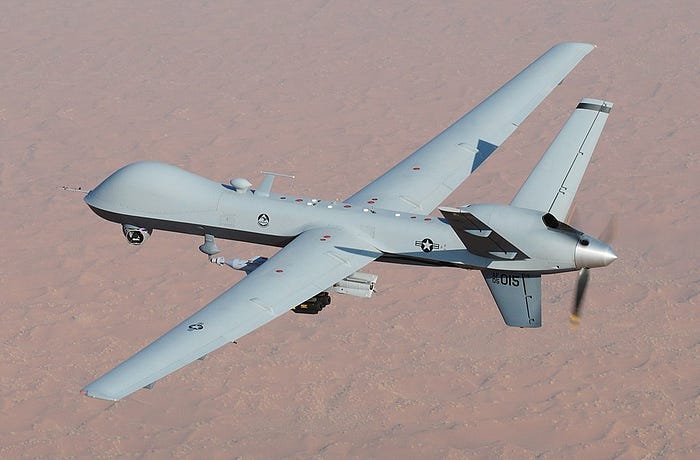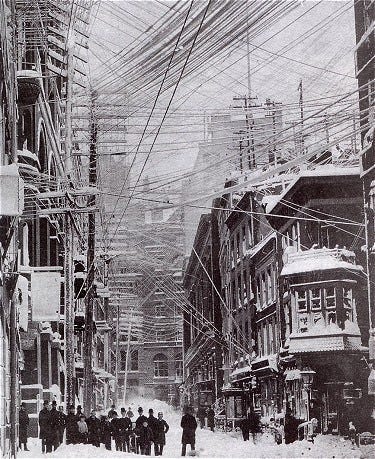Nikola Tesla’s Special Ability That Helped Him Think Like No Other
It enabled him to imagine drones, the internet, and wireless electricity over a hundred years ago
If I asked you to define the characteristics of a genius, what would they be?
It sounds like an easy question. But Dr. Craig Wright has invested years in finding an answer. Furthermore, he even wrote a book about it, and teaches a class at Yale on what makes a genius.
In a recent podcast, he says, “A genius is a person of extraordinary mental powers whose original works or insights change society in some significant way for good or ill across cultures and time.”
If this is the case, Nikola Tesla would have to be among the top of the list of geniuses throughout history. In fact, “mental powers” might be a good description of what made him special. In his autobiography, written around 1919, he sums it up this way:
“I am credited with being one of the hardest workers and perhaps I am, if thought is the equivalent of labor, for I have devoted to it almost all of my waking hours. But if work is interpreted to be a definite performance in a specified time according to a rigid rule, then I may be the worst of idlers. Every effort under compulsion demands a sacrifice of life-energy. I never paid such a price. On the contrary, I have thrived on my thoughts.”
These sound like the words of an inventor.
More precisely, they’d be adequate for someone who invented the AC motor, our current electrical system, wireless electricity, remote controls, and various other ground-breaking technologies. But you’ve already missed something.
The words above hide a key to an incredible talent that made Tesla truly special. It all started when he was a child.
Tesla’s “Peculiar Affliction”
“In my boyhood I suffered from a peculiar affliction due to the appearance of images, often accompanied by strong flashes of light, which marred the sight of real objects and interfered with my thought and action.”
— Nikola Tesla, My Inventions: Nikola Tesla’s Autobiography
Tesla speaks about being tormented by mental images as a child. However, not hallucinations. The pictures were of things he’d seen, and they’d project themselves in front of his eyes, like holograms. And they’d be so vivid, it would be difficult to distinguish reality from the mental image.
It took on a whole new dimension when troubling visions appeared as he tried to sleep. Moreover, Tesla couldn’t make these apparitions leave.
So, he thought of other things he’d seen to cancel out the disturbing images, but soon his “reel” ran out of pictures. Then Tesla sought other ones. Being a child, he was limited in his travels and knowledge, but soon found another method. He’d use his vivid mind to travel.
Tesla went on journeys and saw amazing things, even though he never left. He did this until he was seventeen. He started studying engineering at this time, and found his mental skill created a unique ability. He didn’t need to draw or prototype designs. According to Tesla:
“I do not rush into actual work. When I get an idea I start at once building it up in my imagination. I change the construction, make improvements and operate the device in my mind. It is absolutely immaterial to me whether I run my turbine in thought or test it in my shop. I even note if it is out of balance. There is no difference whatever, the results are the same. In this way I am able to rapidly develop and perfect a conception without touching anything.”
He writes the pictures were so detailed, he could notice wear marks on the metal. These images even saved his life. He tells the story of trying to swim under a large dock as a teenager and almost drowning. As he struggled for air, he saw the design of the structure in his mind.
Tesla was able to swim to a depression in the metal, where he could suck in enough oxygen to complete his escape.
As amazing as this sounds, this visualization ability isn’t entirely unique.
Object Visualizers And Neurodivergent Thinking
In a recent podcast, author, engineer, and teacher Dr. Temple Grandin mentions she thinks in pictures, not words. So, her mind functions like PowerPoint slides. Grandin calls these types of thinkers “object visualizers.”
She says these types of brains excel with machines, art, and photography. Moreover, she describes having abilities like a mental AutoCAD program, where her mind can test designs and know whether they’re functional.
It served her well. Grandin has created facilities for most major livestock handling companies in the United States, and has also designed projects for Disney. She notes there are multiple types of intelligence.
While some do better with words, others excel in math, while still others are good with their hands and designing things. Grandin calls this Neurodivergent thinking.
Now, while thinking in pictures may not be entirely unique, Grandin says object visualizers are usually poor in math and social skills. However, Tesla was strong in both and could visualize like Grandin.
In fact, his ability to socialize enabled him to go from only mental travels, to moving around the world fixing and designing machinery.
In his autobiography, Tesla says he got a job at the Central Telegraph Office in Hungary, which parleyed into designing the telephone exchange. This led him to redesigning power stations in France and Germany. Then, to emigrate to America where Thomas Edison hired him.
All the practical experience helped tremendously, giving his mind more detailed images to focus on. And an amazing image did come. One that was way beyond its time, and few may have heard of.
Tesla’s “World-System”
Tesla mentions walking with a friend in a park and seeing one of those — all too familiar flashes — and suddenly a detailed vision of his eventual AC motor appeared to him. But it wasn’t as sudden as it seems.
Tesla had been designing that motor in his head for a long time. Likewise, thinking about high frequency waves led him to mentally engineering a device for “electric oscillations,” or a Tesla Coil. Eventually this moved to electricity without wires.
Since you could send power wirelessly, why not directions? Tesla thought of “Telautomatics,” or radio-controlled machines, which we now call drones. According to Tesla:
“In an imperfect manner it is practicable, with the existing wireless plants, to launch an aeroplane, have it follow a certain approximate course, and perform some operation at a distance of many hundreds of miles. A machine of this kind can also be mechanically controlled in several ways and I have no doubt that it may prove of some usefulness in war.”

He also believed the “Telautomata will be ultimately produced, capable of acting as if possest of their own intelligence.”
Remember, he was writing this around 1919. But this is nothing. In his “World-System,” Tesla described combining all his inventions into a system which would sound all too logical to a person of the modern world.
Tesla’s World-System would enable a mixture of telegraph, phone, and pictures where anyone in the world could communicate with someone else through “an inexpensive receiver, not bigger than a watch.” You could also listen to music and watch speeches. In other words, the internet.
Furthermore, the system would also transfer energy wirelessly, and direct machines. Tesla articulately states:
“These examples are cited merely to give an idea of the possibilities of this great scientific advance, which annihilates distance and makes that perfect natural conductor, the Earth, available for all the innumerable purposes which human ingenuity has found for a line-wire.”
With all this in mind, let’s go back to Tesla’s original statement we started with.
Nikola Tesla’s Special Ability

Tesla mentions he might have been one of the hardest workers of all time, if thought is equivalent to labor. That’s where his special power comes in. In his own words:
“I have dwelt on the circumstances of my early life and told of an affliction which compelled me to unremitting exercise of imagination and self observation. This mental activity, at first involuntary under the pressure of illness and suffering, gradually became second nature…”
It also led him to develop the greatest workshop in the inventor’s possession: his mind.
Like Grandin, Tesla’s mind functioned as an AutoCAD program — continually adapting and changing designs — faster than human hands could ever move. It enabled the inventor to work endlessly and evolve.
While the rest of the world was tangled in wires, Tesla was prototyping what we’d recognize as Wi-Fi, the internet, wireless electricity, and drones within the lab of his imagination.
So, if you consider a genius “a person of extraordinary mental powers whose original works or insights change society in some significant way for good or ill across cultures and time.” Tesla might be the ultimate example.
Originally posted on Medium 5/27/23



